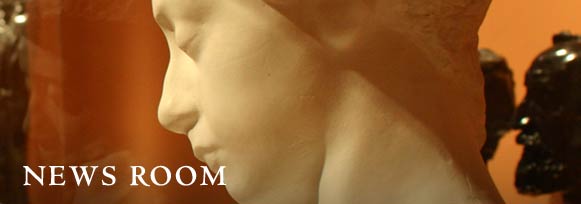First Exhibition of Tuareg Art and Culture in America Appears at Stanford Before Traveling to the Smithsonian's National Museum of African Art
Art of Being Tuareg: Sahara Nomads in a Modern World
May 30 – September 2, 2007
Stanford, California — The Cantor Arts Center at Stanford University presents "Art of Being Tuareg: Sahara Nomads in a Modern World," May 30 through September 2, 2007. This is the first U.S. exhibition to examine Tuareg art, culture, and history, and it features more than 200 objects, including jewelry, clothing, leatherwork, and other distinctive items of these semi-nomadic West African people of Niger, Mali, and Algeria.
"The Tuareg, with their elegant dress, exquisite ornamentation, refined song, speech, and dance, have fascinated travelers and scholars throughout history," said Thomas K. Seligman, John & Jill Freidenrich Director of the Cantor Arts Center. "With Americans' increased awareness of the Islamic world, the sale of Tuareg jewelry in exclusive boutiques, recent tours in the U.S. by Tuareg music and dance groups, and even a car named after the people, this exhibition meets a growing interest in the Tuareg and their rich culture."
The exhibition begins with photographic portraits and first-person accounts of what it means to be a Tuareg in a modern world. Next, the viewer enters a gallery that evokes the openness of the desert. This section features a hide tent, supported by decorated poles and surrounded by geometrically patterned windscreens and a variety of wooden bowls and leather bags. Other highly refined works include camel saddles, daggers and swords, tools, and musical instruments, all typical of a nomadic Tuareg lifestyle. Classical Tuareg silver and leather jewelry is also featured
Video footage from a desert wedding shows the confluence of the Tuareg’s past and present. Men, wrapped in indigo veils, ride camels and drive 4x4 vehicles. Women wear locally embroidered shirts and wraps, as well as imported fabrics. Tuareg musicians play a goatskin drum as well as electric guitars.
The exhibition proceeds to a presentation of the finest older objects from the new Musee Quai Branly, Paris, and the Musee d’ethnographie Neuchatel, Switzerland, set in a display typical of an art museum, and continues with a close look at one well-respected inadan (artist or smith) family group in Niger, with a simulation of their workshop. A video shows the family making jewelry and provides insight into their lives.
The exhibition, curated by Seligman and Kristyne Loughran, an independent scholar, has been co-organized by the Cantor Arts Center at Stanford University and the Fowler Museum at UCLA. "Art of Being Tuareg" premiered at the Fowler Museum in the fall of 2006. After viewing at Stanford, the exhibition goes to the National Museum of African Art, Smithsonian Institution, October 10, 2007 – January 27, 2008.
The exhibition, its accompanying publication, and related public programs are made possible by the generous support of C. Diane Christensen and Karen Christensen; at the Cantor Arts Center, the Halperin Director’s Discretionary Fund, the Phyllis C. Wattis Program Fund, and the Bill and Jean Lane Fund; at the Fowler, the Shirley and Ralph Shapiro Director’s Discretionary Fund, the Yvonne Lenart Public Programs Fund, and Manus, the Support Group of the Fowler Museum.Venues
| UCLA Fowler Museum, Los Angeles | October 29, 2006 – February 25, 2007 |
| Cantor Arts Center at Stanford University | May 30 – September 2, 2007 |
| Smithsonian’s National Museum of African Art | October 10, 2007 – January 27, 2008 |
Free Tours |
Demonstrations |
Exhibition Catalogue
|
Symposium |



